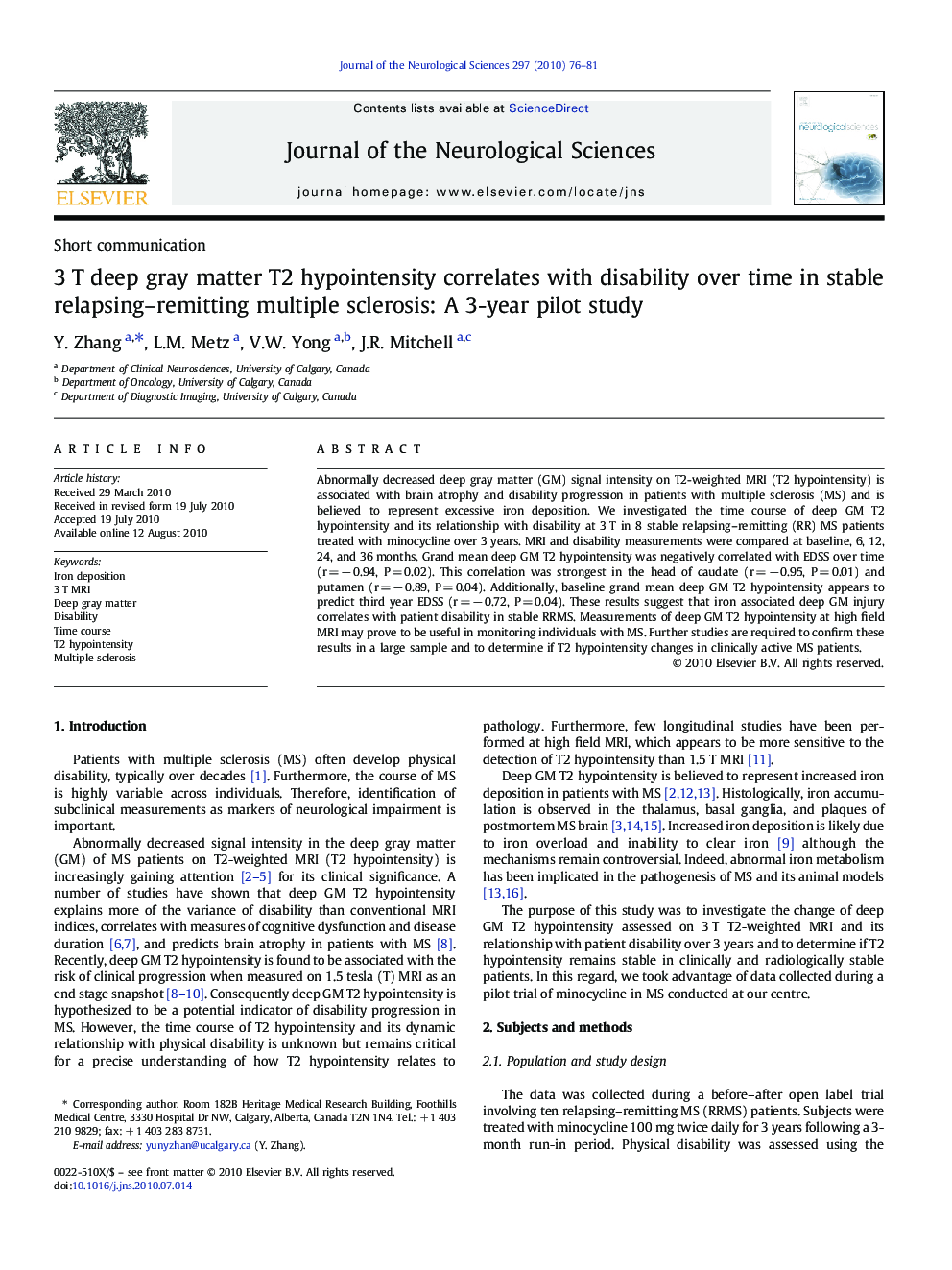| Article ID | Journal | Published Year | Pages | File Type |
|---|---|---|---|---|
| 1914697 | Journal of the Neurological Sciences | 2010 | 6 Pages |
Abnormally decreased deep gray matter (GM) signal intensity on T2-weighted MRI (T2 hypointensity) is associated with brain atrophy and disability progression in patients with multiple sclerosis (MS) and is believed to represent excessive iron deposition. We investigated the time course of deep GM T2 hypointensity and its relationship with disability at 3 T in 8 stable relapsing–remitting (RR) MS patients treated with minocycline over 3 years. MRI and disability measurements were compared at baseline, 6, 12, 24, and 36 months. Grand mean deep GM T2 hypointensity was negatively correlated with EDSS over time (r = − 0.94, P = 0.02). This correlation was strongest in the head of caudate (r = − 0.95, P = 0.01) and putamen (r = − 0.89, P = 0.04). Additionally, baseline grand mean deep GM T2 hypointensity appears to predict third year EDSS (r = − 0.72, P = 0.04). These results suggest that iron associated deep GM injury correlates with patient disability in stable RRMS. Measurements of deep GM T2 hypointensity at high field MRI may prove to be useful in monitoring individuals with MS. Further studies are required to confirm these results in a large sample and to determine if T2 hypointensity changes in clinically active MS patients.
